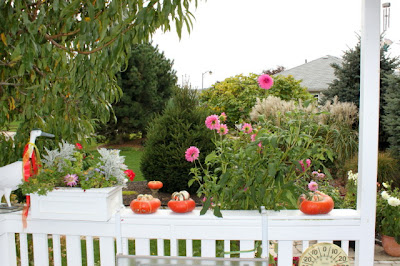I know that lots of people like Fall but for me it is not a favorite part of the year. I know that for few weeks it is very colorful time of the year, especially here in Ontario, and that it offers tons of picture taking opportunities, but for me it is a sad season. Everything around me in nature is dying or coming to rest and I just don’t see beauty in that. I love Spring when everything is fresh and growing and everywhere you look there is new life. I guess I have to wait 6 months for that so meanwhile, as far as picture taking opportunities go, I’ll shoot some leaves and the usual fall pictures.
Last month I bought variable neutral density filter (ND) for my 18 – 55mm and 70 – 300mm zoom lenses. What an incredible piece of equipment! It lets me stretch the shutter speed and gives the picture very interesting quality. You see pictures of waterfalls, rivers, lakes etc. in magazines and calendars but most people don’t know how that blurry, sort of dreamy look was achieved. Last few weeks I around with this ND filter and here are some examples.
Ornamental grasses on a windy day.
f/11, 1.3 second, ND filter, ISO 100, Aperture Priority. Thanks to longer exposure made possible by use of ND filter you can see the movement of the grasses.
Lake Lisgar, Tillsonburg.
f/16, 15 seconds, ND filter, ISO 100, Aperture Priority. With ND filter set about 3/4 maximum the lake looks flat, not even a ripple. Anytime I use the ND filter I rely on my super heavy Manfrotto tripod.
Lake Lisgar, Tillsonburg.
f/20, .5 second, ND filter, ISO 100, Aperture Priority.
Otter Creek, Tillsonburg.
f/5, 1/20 seconds, +1ND filter, ISO 100, Aperture Priority
In regular shot the rapids look fast and choppy.
Otter Creek, Tillsonburg.
f/11, 1.6 seconds, ND filter, ISO 100, Aperture Priority. With longer exposure the rapids appear slow and smooth.
Port Bruce, Lake Erie.
f/10, 1/8 second, ND filter, ISO 400, Aperture Priority. Here the ND filter acts as a regular polarizer filter, which it basically is, and darkens the sky.
Black Walnut, Sparta, Ontario.
f/7, 1/200 second, ND filter, ISO 400, -1 Exposure compensation, off camera flash with E-TTL on. Since I was shooting straight against the sun the flash was a must.























































